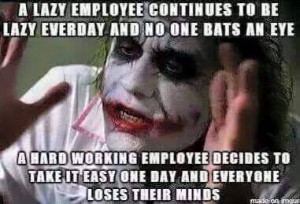Retail’s Wage Problem Is Rage-Inducing. Woman are still paid less than men

The retail industry employs millions of U.S. workers, but a new study shows that the industry’s wages are majorly lacking — and that women are still being discriminated against to the tune of billions of dollars. That’s billions with a B, as Oprah would say.
Recent research reveals that the 7.2 million women employed in retail nationwide, mostly as salespeople and cashiers, earn an average of $10.58 per hour. But, male sales associates earn an average of $14.62 an hour — $4.04 more than women who do the the same jobs.
But, that rage-inducing gender gap isn’t the only problem with retail wages. Complicating the issue is the industry’s increased use of “just-in-time” scheduling, which uses software to analyze a store’s real-time customer traffic and schedules employees only if needed — often at the last minute. That means employees’ incomes rise and fall week-to-week, and they’re essentially on hold for their employers, losing opportunities for more lucrative or consistent work.
It’s important to remember that the wage gap doesn’t only affect working women. Anincreasing number of U.S. women are the primary breadwinners for their households, so their children are affected by low wages, too. The study reports that 1.3 million women in the retail industry live in or near poverty. If current trends continue, there will be 1.4billion women living in poverty by 2022 — plus the family members they support.
Of course, industry groups often oppose wage hikes, with the National Retail Federation calling the proposal to raise the federal minimum wage an “anti-job tax” that leads to “fewer opportunities for young and entry-level workers.” But, the study counters that there would actually be benefits to raising retail wages to $25,000 for all full-time workers, men and women. Not only would that narrow the gender gap, it would raise our gross domestic product, leading to the creation of over 100,000 new jobs.
As for the common claim that rising retail wages hurt businesses? Raising employee wages to $25,000 per year would cut into less than 1% of the retail industry’s $4.3 trillion annual sales. And, if companies pass half the costs of a wage increase on to customers, the average household would only pay 15 cents more per shopping trip — that’s a total of $17.73 more a year, the study found.
We like to think people would be willing to spend $20 per year to lift millions of men, women, and children out of poverty. And, we’d really like to think that the retail industry would consider the tiny dent in their profits a worthwhile investment in their employees’ health, well-being, and living standard. And, let’s not forget, workers are consumers, too. Higher retail wages mean more purchasing power for millions of Americans — and that’s something that benefits everyone’s bottom line
Sourced from Refinery29.com

























Recent Comments